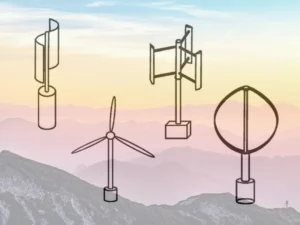What is Wind and how is it formed
The answer to this question is more complicated than you might imagine. In this post, you will discover what it is, what causes it, and how it affects our climate. Wind is an indispensable part of our daily lives, and understanding how it works can also help us appreciate our world more.

Wind is simply air in motion. It is formed because of differences in air pressure at different altitudes. When warm air rises, it creates a low-pressure zone. Cold air, on the other hand, tends to fall, creating a high-pressure zone. When these two zones meet, air moves from the high pressure zone to the low pressure zone, generating air in motion.
Causes of Pressure Difference
There are many things that can affect the temperature of the air, which in turn affects its pressure. For example, altitude and the angle of the sun’s rays affect the amount of heat we receive. Areas near the equator receive more heat than polar areas, which creates a temperature gradient around the globe. Winds and currents are continuous attempts by the atmosphere to compensate for these gradients, but the Earth is a chaotic place, and these attempts to balance create weather phenomena such as cyclones, typhoons and hurricanes.
The Enormous Influence of Wind
Wind has a huge influence on our world. It moves clouds and air, transporting pollen, seeds, spores and other things all over the planet. Without wind, plants would have no way to reproduce and there would be no air currents to power the different wind turbines that produce renewable energy. In addition, wind can cool or heat surfaces, remove moisture from the air, and even erode the earth.
Effects of climate change
Climate change has a significant impact on everything, not only on how wind turbines should be designed. With global warming, the distribution of heat on earth changes, causing differences in atmospheric pressure. These pressure differences are the driving force behind the wind. When pressure differences increase, wind strength also increases. In addition, global warming can cause an increase in atmospheric turbulence, which in turn can lead to more extreme winds. Therefore, as climate change progresses, we can expect wind to become increasingly intense and unpredictable. This is also likely to affect the efficiency of next-generation wind turbines.


3 thoughts on “What is Wind and how is it formed”
Comments are closed.